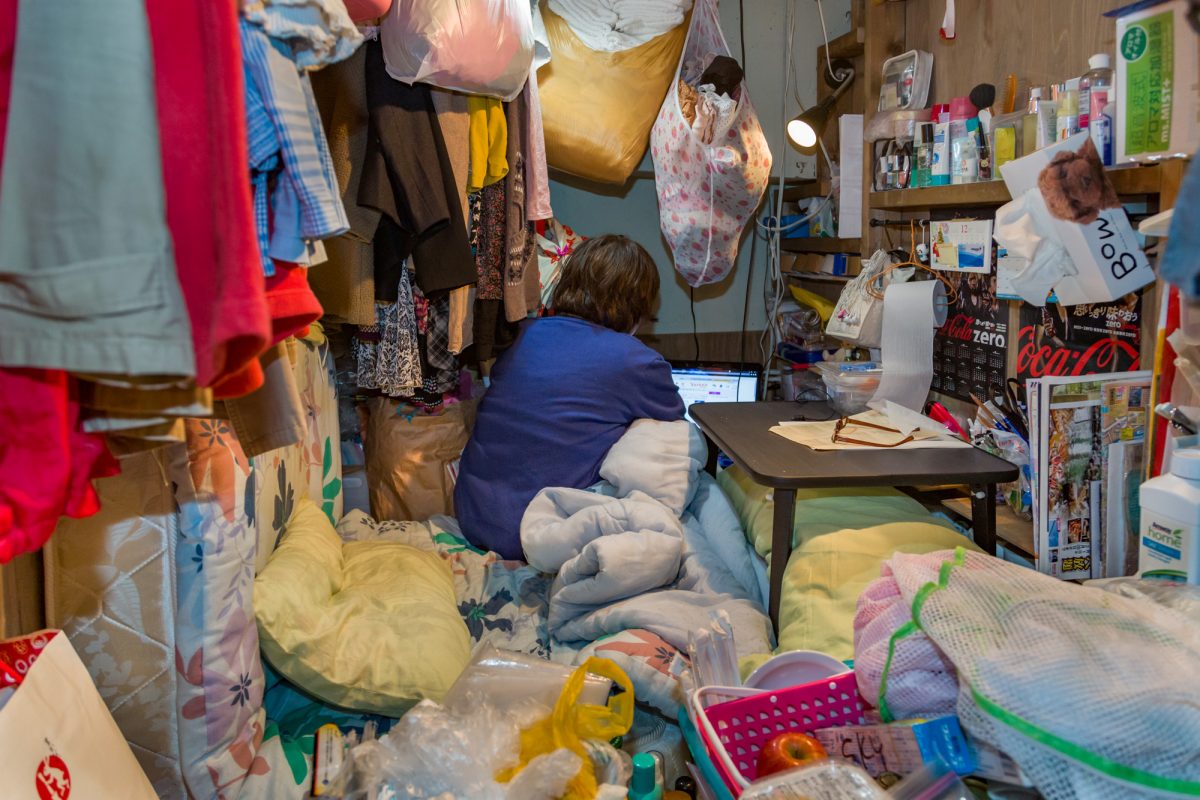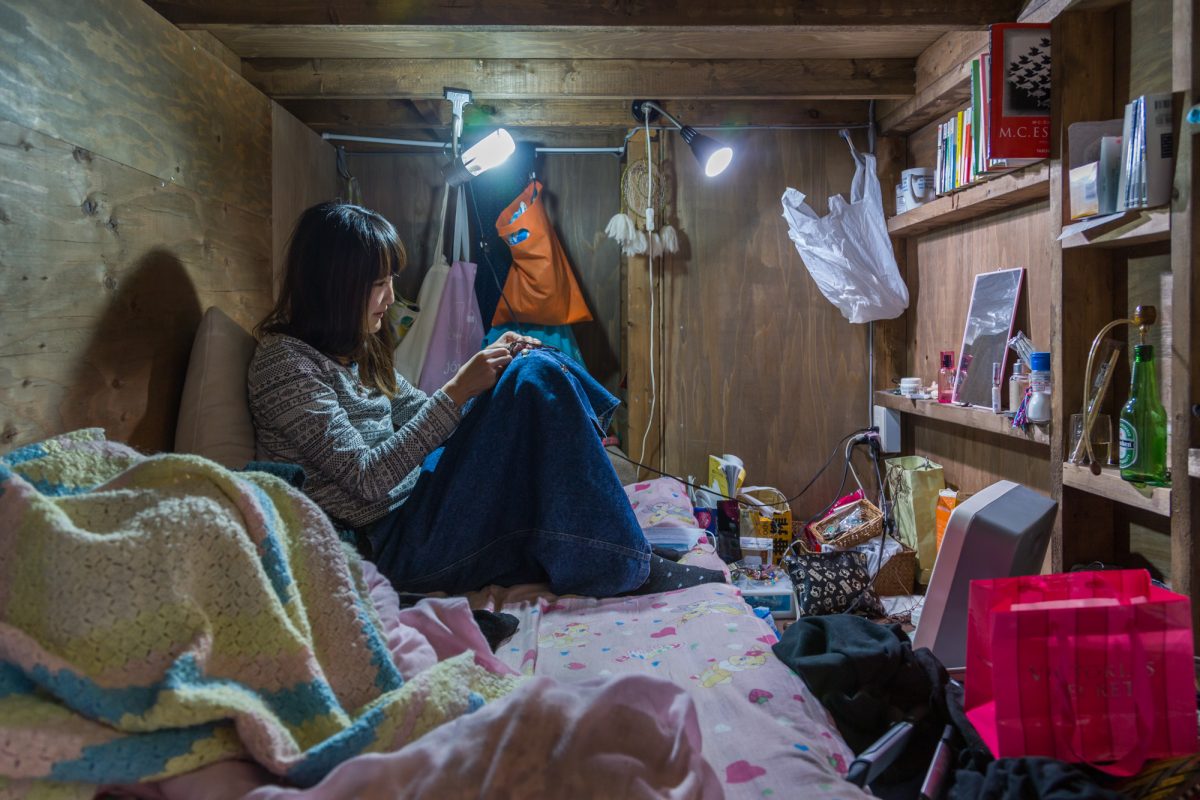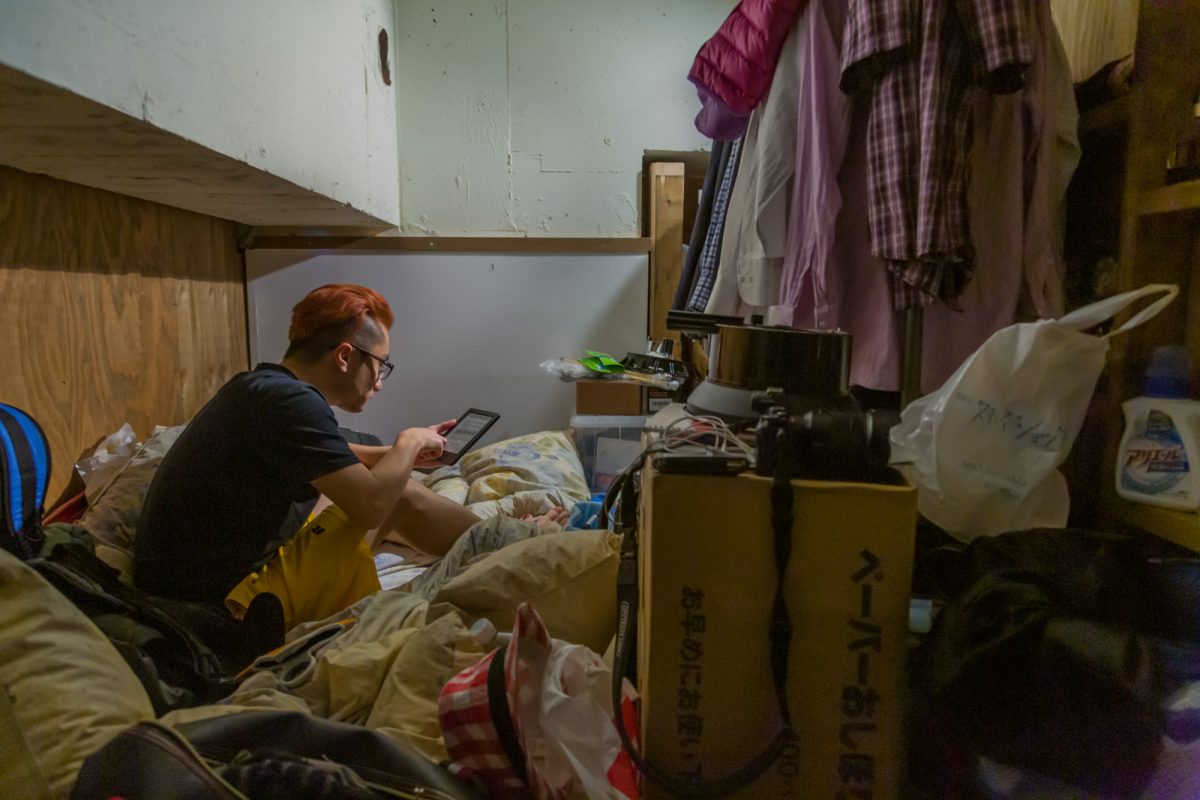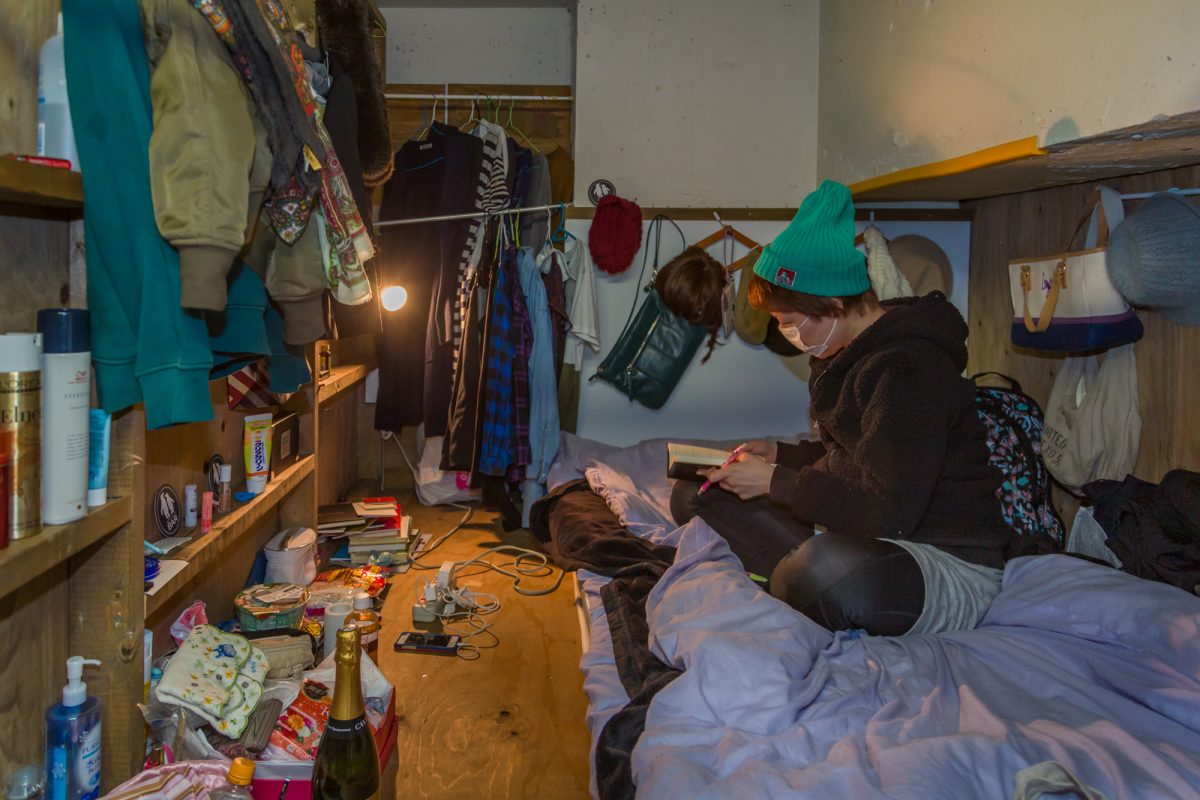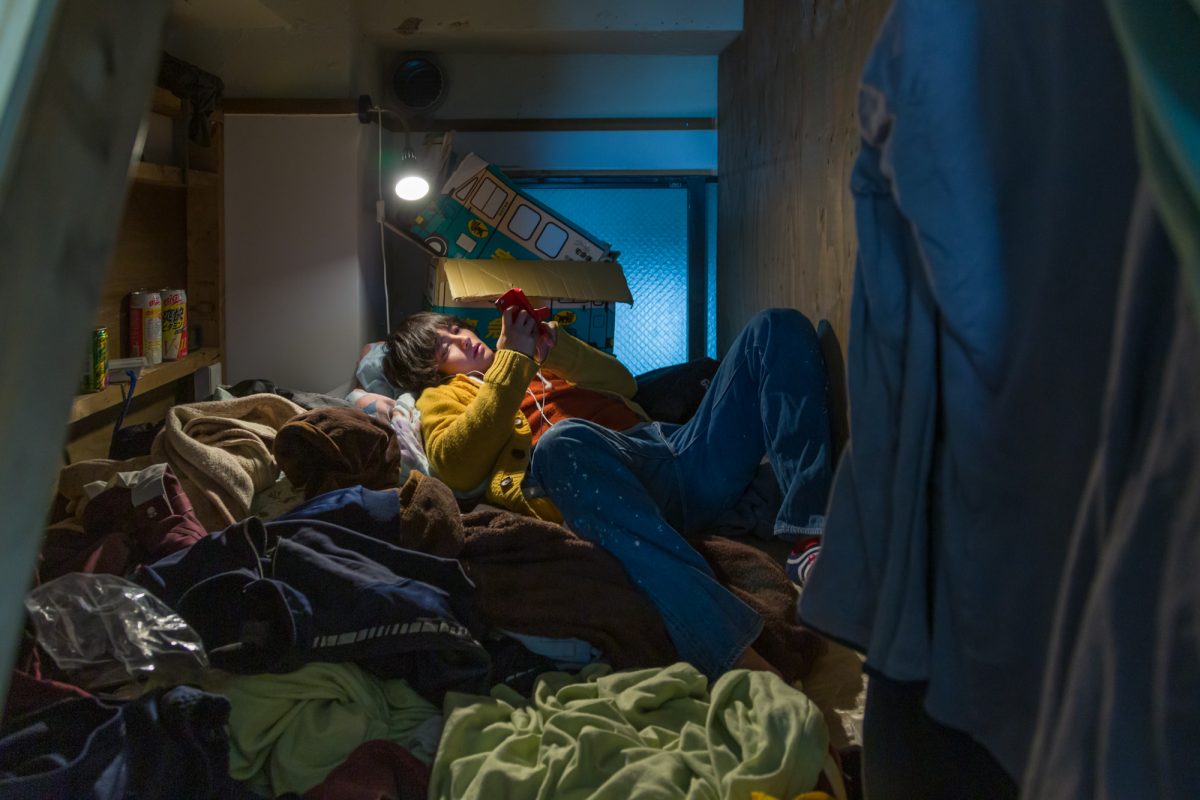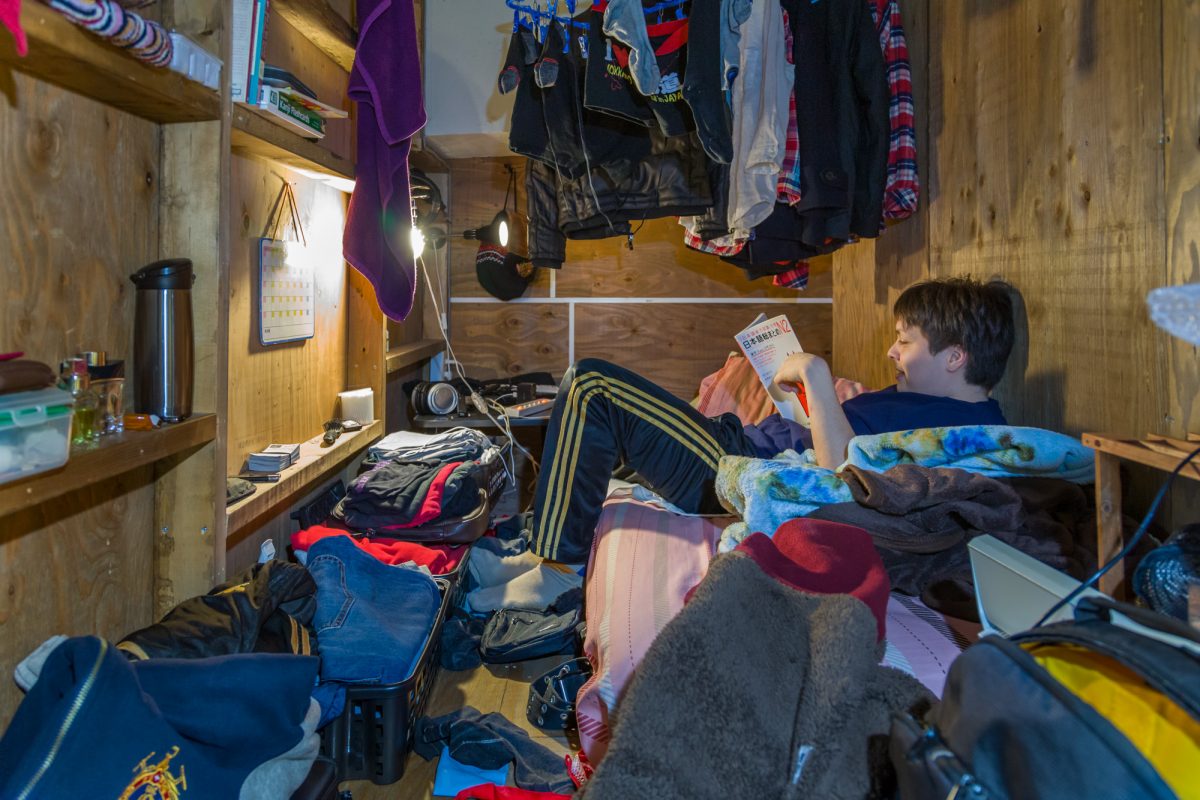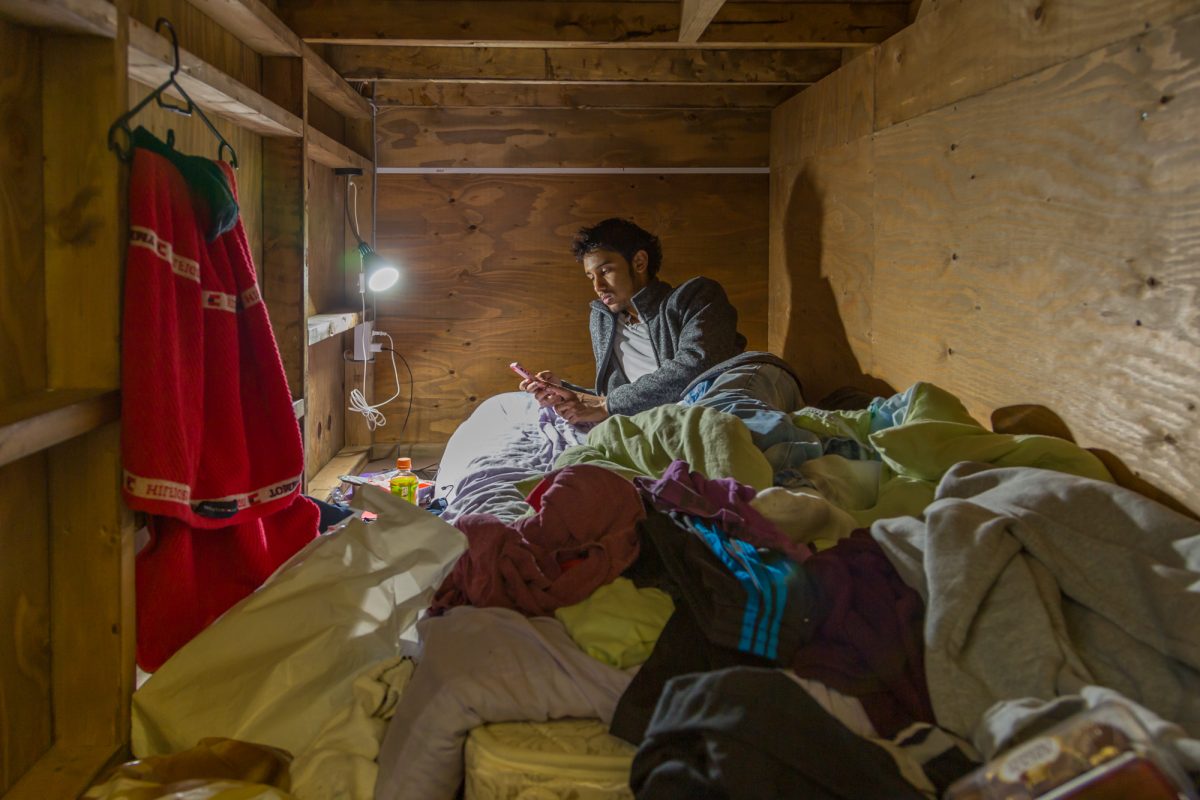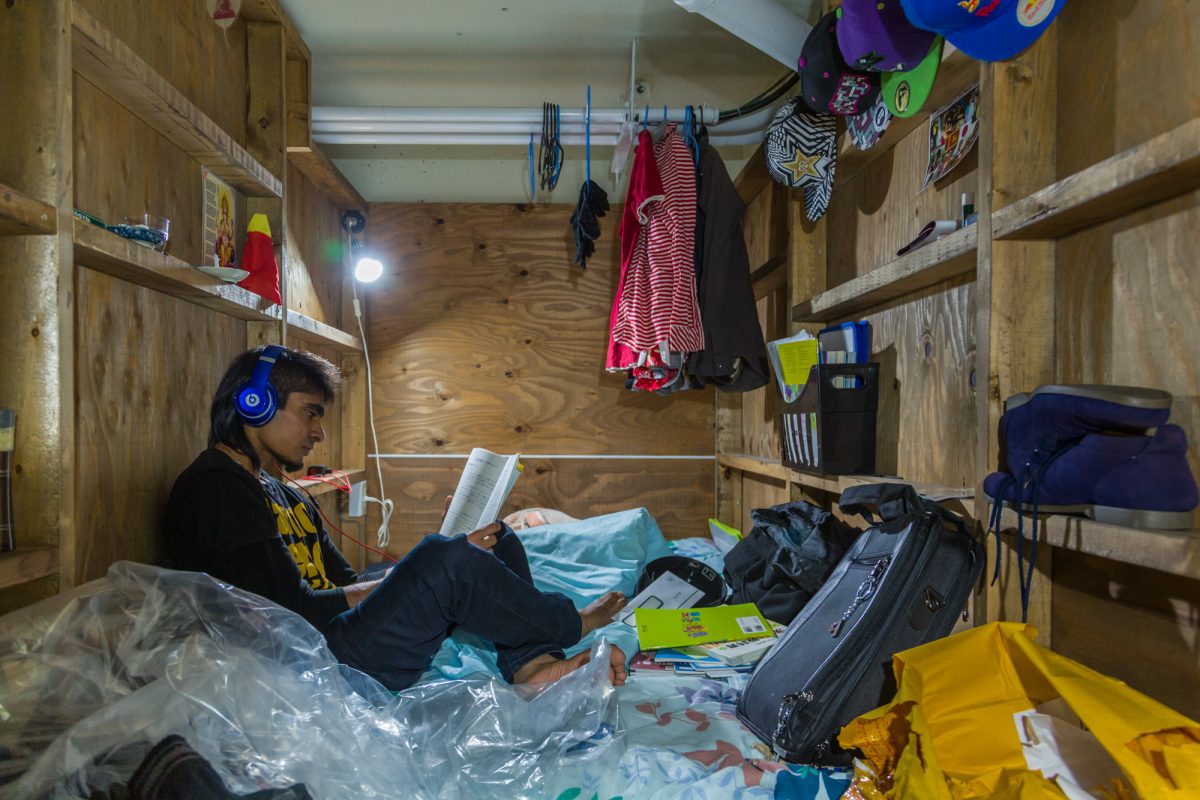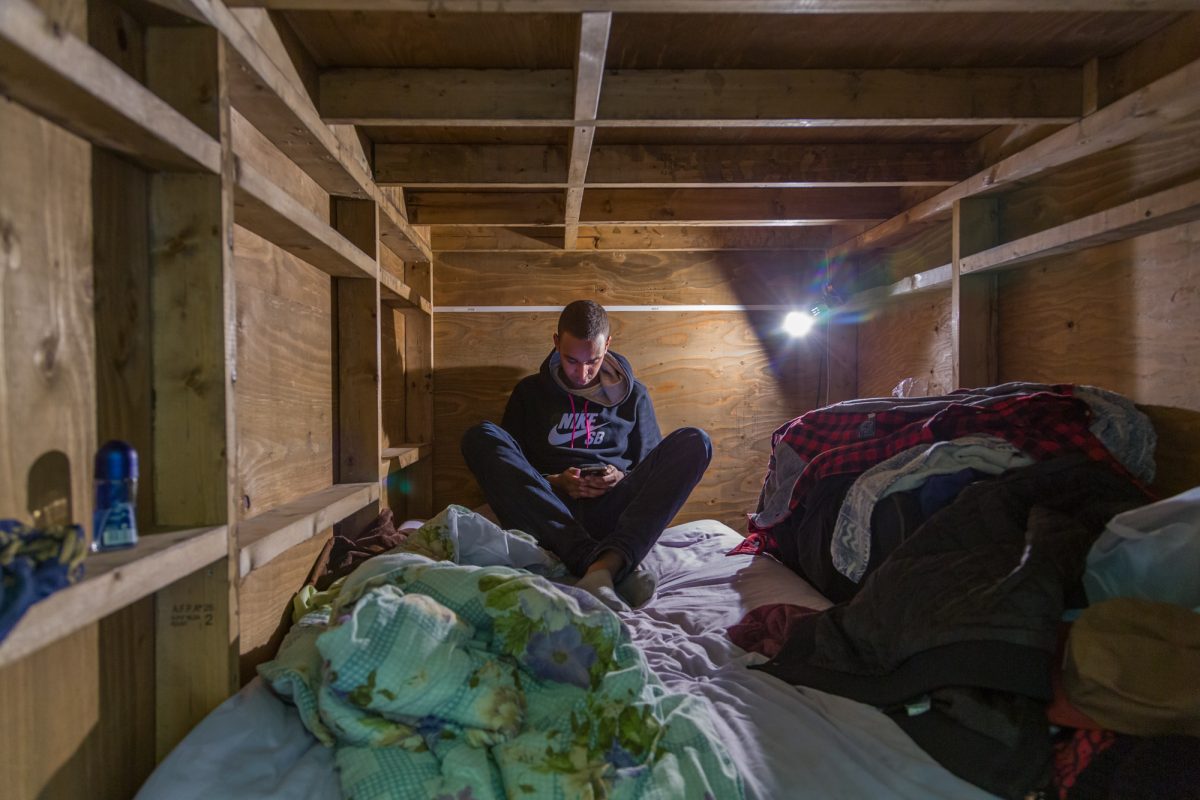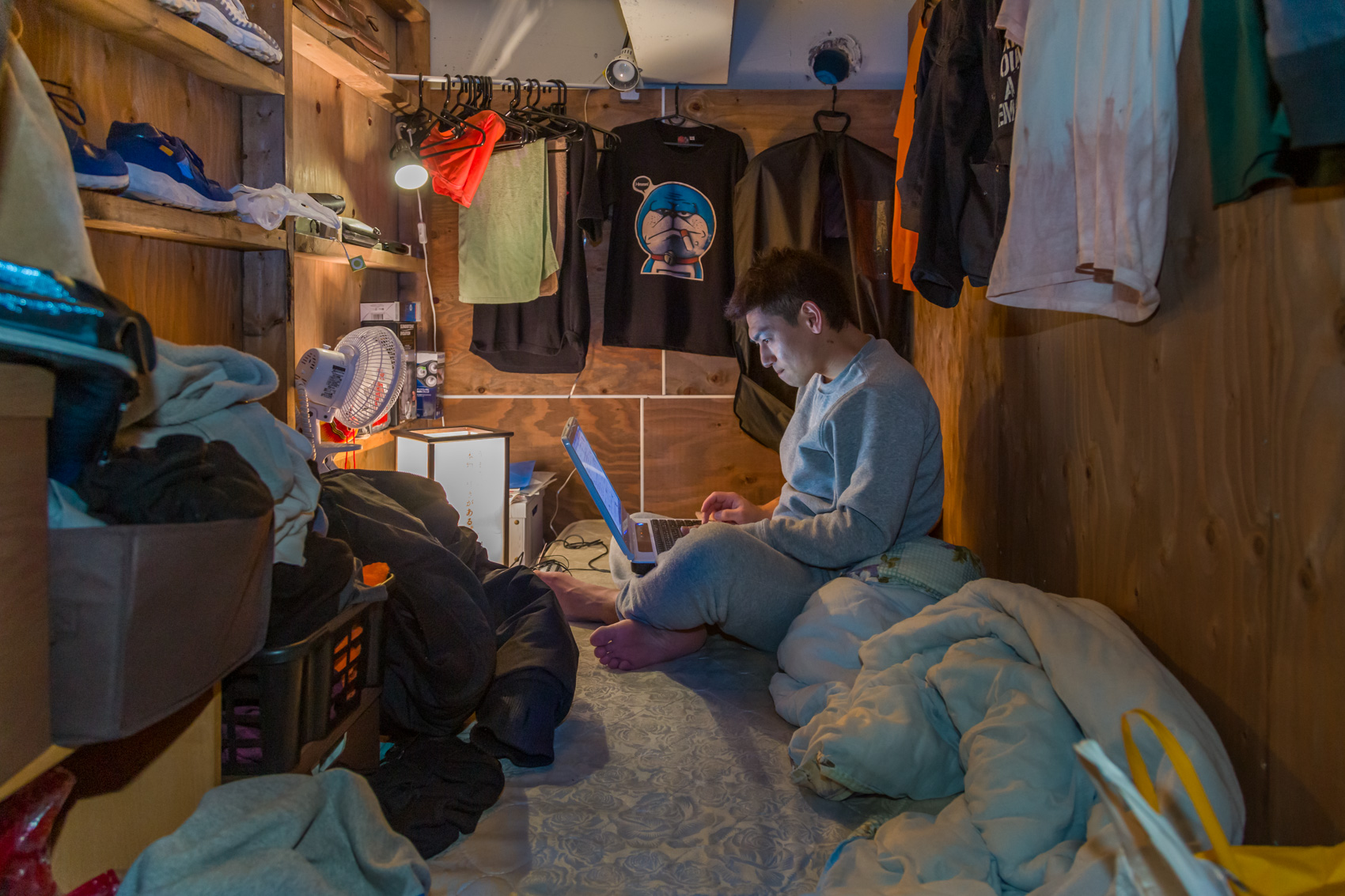The Japanese are well-known for making efficient use of small living areas, a necessity of their high population density. I myself often find the womb-like qualities of these spaces comforting, not confining. This feeling is what led me to the subject of these portraits, which show the residents of what is best described as a guesthouse for backpackers in Tokyo. The facility is a sort of downscale version of the well-known “capsule hotels” often used by Japanese businessmen for short-term stays.
One of several such facilities in the city, this diminutive, bare-bones hotel takes up one floor of an office building. It is composed of a few hallways, along which the proprietor has built tiny living compartments, none with enough headroom to stand up straight inside. Separated only by unfinished plywood, the spaces have no windows or door, only a curtain at the entrance for privacy.
For me, the real interest of the resulting portraits is in how each resident has made use of a such a small, confining space. Some of the interiors are spartan, perhaps occupied by people who are staying only for a short time. Others are full of possessions, often complete with hanging wardrobes and improvised bookshelves—even “decorated.” Of these, some are neat and orderly and others are chaotic, with personal items strewn everywhere. In each case, the sharply-defined space and its contents tell something about its occupant’s personality, and his or her ability to function in such a strange, enclosed environment.
